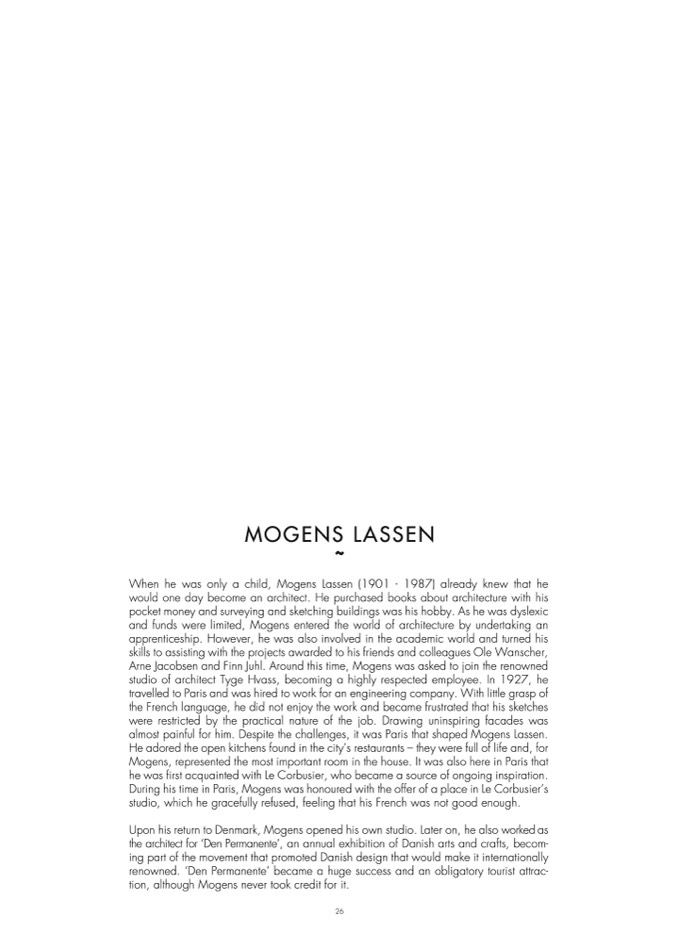
MOGENS LASSEN
~
When he was only a child, Mogens Lassen (1901 - 1987) already knew that he
would one day become an architect. He purchased books about architecture with his
pocket money and surveying and sketching buildings was his hobby. As he was dyslexic
and funds were limited, Mogens entered the world of architecture by undertaking an
apprenticeship. However, he was also involved in the academic world and turned his
skills to assisting with the projects awarded to his friends and colleagues Ole Wanscher,
Arne Jacobsen and Finn Juhl. Around this time, Mogens was asked to join the renowned
studio of architect Tyge Hvass, becoming a highly respected employee. In 1927, he
travelled to Paris and was hired to work for an engineering company. With little grasp of
the French language, he did not enjoy the work and became frustrated that his sketches
were restricted by the practical nature of the job. Drawing uninspiring facades was
almost painful for him. Despite the challenges, it was Paris that shaped Mogens Lassen.
He adored the open kitchens found in the city’s restaurants – they were full of life and, for
Mogens, represented the most important room in the house. It was also here in Paris that
he was first acquainted with Le Corbusier, who became a source of ongoing inspiration.
During his time in Paris, Mogens was honoured with the offer of a place in Le Corbusier’s
studio, which he gracefully refused, feeling that his French was not good enough.
Upon his return to Denmark, Mogens opened his own studio. Later on, he also worked as
the architect for ‘Den Permanente’, an annual exhibition of Danish arts and crafts, becom-
ing part of the movement that promoted Danish design that would make it internationally
renowned. ‘Den Permanente’ became a huge success and an obligatory tourist attrac-
tion, although Mogens never took credit for it.
26

